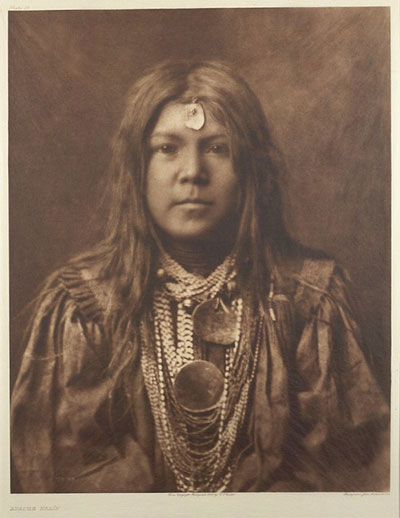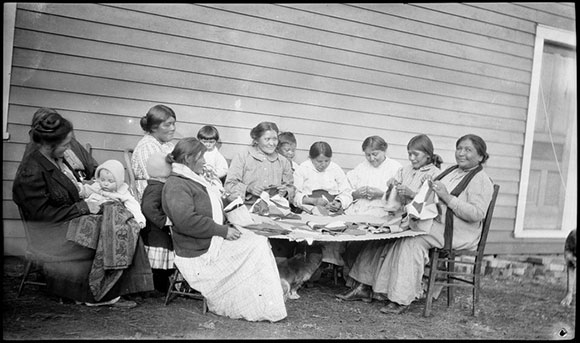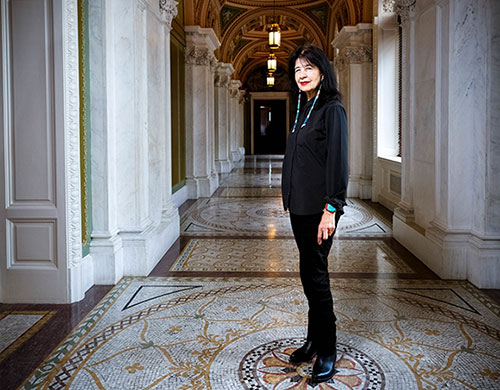No matter how hard of a truth it may be to bear for some, Native American History is a part of American history, and it deserves to be heard with full disclosure and honesty.

Apache Nalin
Smithsonian Institution Flickr site
33 years ago, former President George H.W. Bush declared November as National Native American Heritage Month, a month where we highlight and uplift Native voices to have the platform to share their history, culture, and traditions, on their terms, and honor their stories by doing away with the filtered versions that are so often told by voices that aren’t their own.
So, bearing this in mind, the question isn’t ‘why does it matter’ but rather, why wouldn’t it?
Explore Cultural Anthropology Degrees @ Coastline
History of Native American Heritage Month
In 1990, former President George H. W. Bush declared November to be National Native American Heritage Month, which was a monumental stepping stone, but the history of designated celebrations for Native Americans didn’t start with his recognition.
In the early steps to recognition, the month started as a day, through the efforts of Native American archaeologist and historian, Dr. Arthur C. Parker, who convinced the Boy Scouts of America to designate a day for the “First Americans”, for the next three years. In 1915, Rev. Sherman Coolidge, a Northern Arapaho and president of the Congress of the American Indian Association, proclaimed the second Saturday of May to be “American Indian” day, along with a plea for Native Americans to have a right to exist.
Before Rev. Sherman Coolidge, Red Fox James, a Blackfoot Indian, traveled to various states seeking approval for a day designated to Native Americans and presented his 24 approvals on December 14th, 1915, but no record of the proclamation exists.
The first “American Indian” Day was declared in New York in 1916 and was then declared as a week in October in 1976 by President Gerald Ford and again as a week in November in 1986 by Congress. On August 3rd, 1990, the celebrations were expanded into a month at George H.W. Bush’s approval.

Native Americans from Southeastern Idaho
National Archives Catalog
Preserving the Truth of Native History
Native history in textbooks is often told through the lens of a Western perspective and rarely gives a voice to the totality of the horrors Native Americans faced from European settlers, but the horrors are many, and it’s a disservice to shy away from them.
Pre-Colonialization, historians believe that the Native American population inhabiting the United States was estimated to be around 10 million. This number represents over 600 tribes that lived above the Rio Grande Valley before the 15th century, with all of them holding their own diverse set of beliefs and traditions.
With the arrival of Columbus and other European settlers between 1492 and the late 1500s, 90% of the Native population was wiped out due to being the victims of biological warfare with the introduction of Western diseases like measles and smallpox.
The genocide and erasure of Native Americans were ongoing for the next 500 years, with The U.S. government forcibly displacing them from their homes by forcing them into treatises that forced them into giving up large sections of land in exchange for self-governance over themselves. However, as Native Hope puts it, 500 treaties were made, and 500 were broken.
Native Children were kidnapped from their families and forced into federally funded boarding schools where they faced various forms of abuse, and the expression of their culture and identity was prohibited in a cruel attempt to assimilate them into Western culture.
As a result, many Native tribes, languages, and traditions that existed pre-colonization have been lost, but Native people have continued to persevere, maintain a strong resilience that has been passed down through generations, have pride in their lineage, and preserve and restore their history in the face of ongoing adversity.
As of 2022, Native Americans and Alaska Natives make up 2% of the total population. There are 574 federally recognized tribes in the U.S., 109 of which are in California, and 81 are still seeking federal recognition.
Explore History Degrees @ Coastline

Members Sewing Society
Smithsonian Institution Flickr site
Uplifting Their Culture
In acknowledging the truth of Native American history, it’s important to celebrate the diversity of Native cultures and highlight their continuous perseverance and restoration. They are still here and are not a culture or group of the past as history may make it seem.
Native culture has many traditions, one of them being their deep connections to the land. In an article about the Dakota Access Pipeline in 2016, Kelli Mosteller, expands on this connection, saying, “Whether in our ancestral homelands, such as those where the Lakota have stopped the construction of the pipeline, or in areas of Oklahoma, where more than two dozen tribes were forcefully placed during the 19th century, protecting our tribal land bases is an intrinsic part of the formula that will lead to greater prosperity and success for individuals and tribes in Indian country.”
Native culture also deeply values using the art of oral storytelling to preserve and record their history, as well as to connect and share stories, and lessons from generation to generation. Native Hope notes storytelling as a catalyst for “unity, generational healing, and personal growth” in Native people, and a way for non-natives to listen, learn, and empathize with lives different from theirs.
As native languages have been on a decline, many Native communities are actively working to revitalize and preserve them. Programs like Native Language Preservation and Maintenance, and Esther Martinez Immersion, provide funding for projects dedicated to preserving languages in Native American communities, and there has been an uptick in the younger generation wanting to learn the languages of their tribes.
There are various ways we can celebrate Native American cultures. Whether it’s going to local events, visiting museums and reservations, researching the traditions and way of life of different tribes and cultures, or listening to the stories of Indigenous people. All play a part in raising awareness as we bear witness and participate in keeping their culture alive.

Poet Laureate of the United States Joy Harjo, June 6, 2019. Harjo is the first Native American to serve as poet laureate and is a member of the Muscogee Creek Nation.
Library of Congress Flickr Site
Why It Matters
The effects of colonialism are still felt and reverberating throughout Native communities. Currently, many Indigenous people face historical trauma with rising mental health issues as a result, of ongoing discrimination and injustice from society, and still deal with struggles of land ownership.
Understanding and listening to the histories of Indigenous people while being non-native allows us the foresight to learn the history further on our own, call out discrepancies when we hear them, celebrate their culture, and raise awareness of the challenges they currently face. As we continually place the truths and intricacies of their history at the forefront, the celebration and understanding of Native American heritage can exceed past November.
Resources to Learn More
Native American Heritage Month
NativeHope.org
Wernative.org
Native Knowledge 360
National Congress of American Indians
Sources
Native American Heritage Month
Native Hope
National Congress of American Indians
Administration for Native Americans
Wernative.org
California Tribal Communities
FAQs about California’s Indian Tribes and Tribal Communities
Native and Indigenous Communities and Mental Health